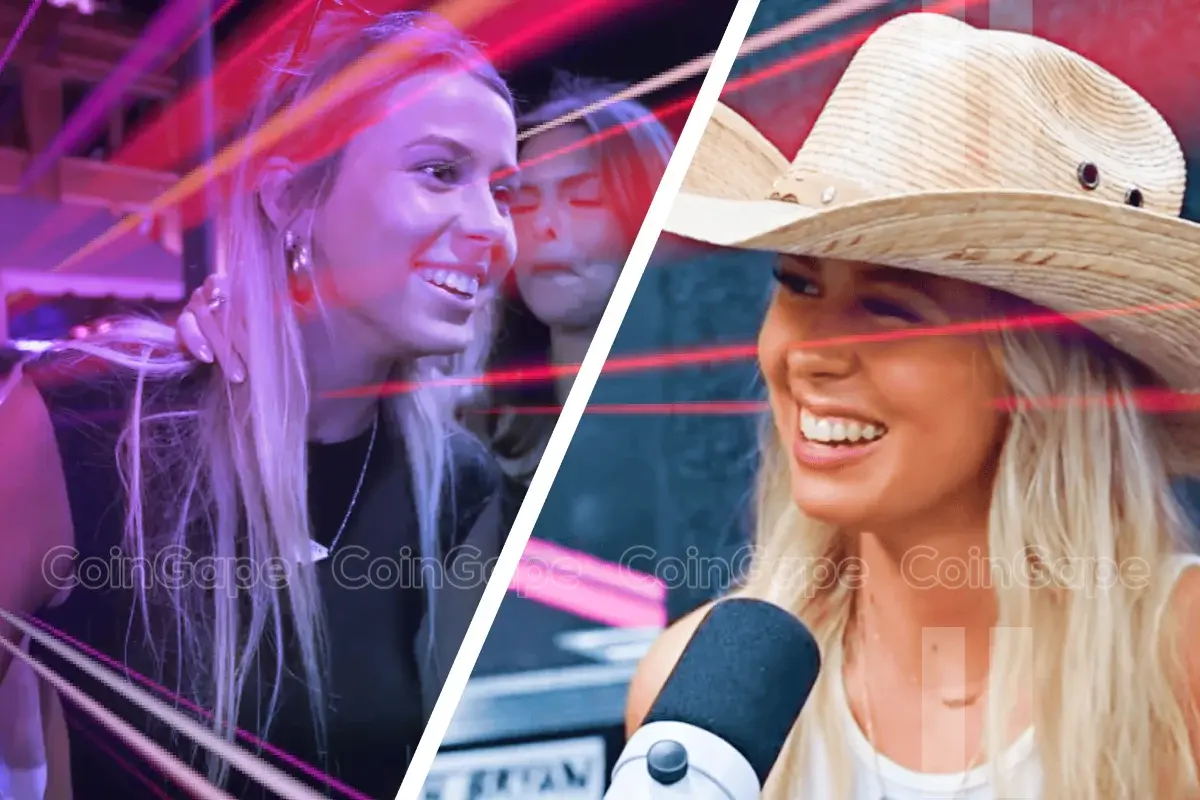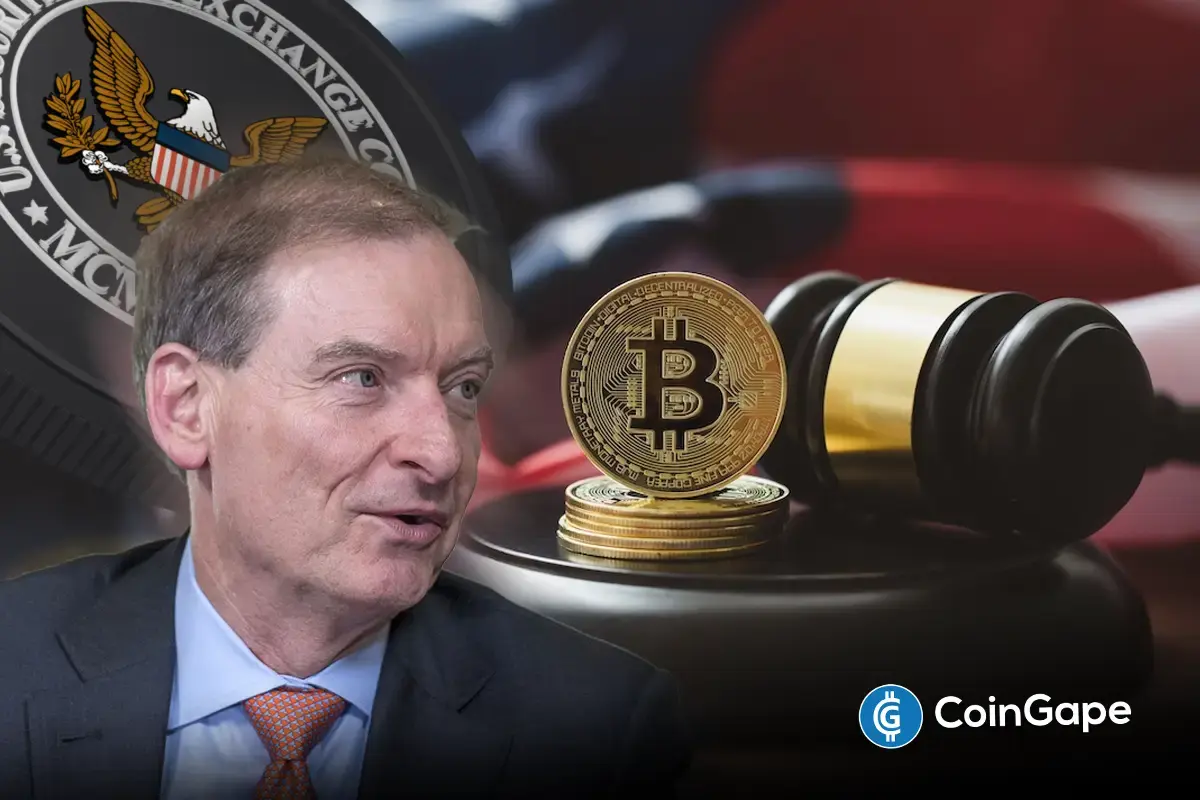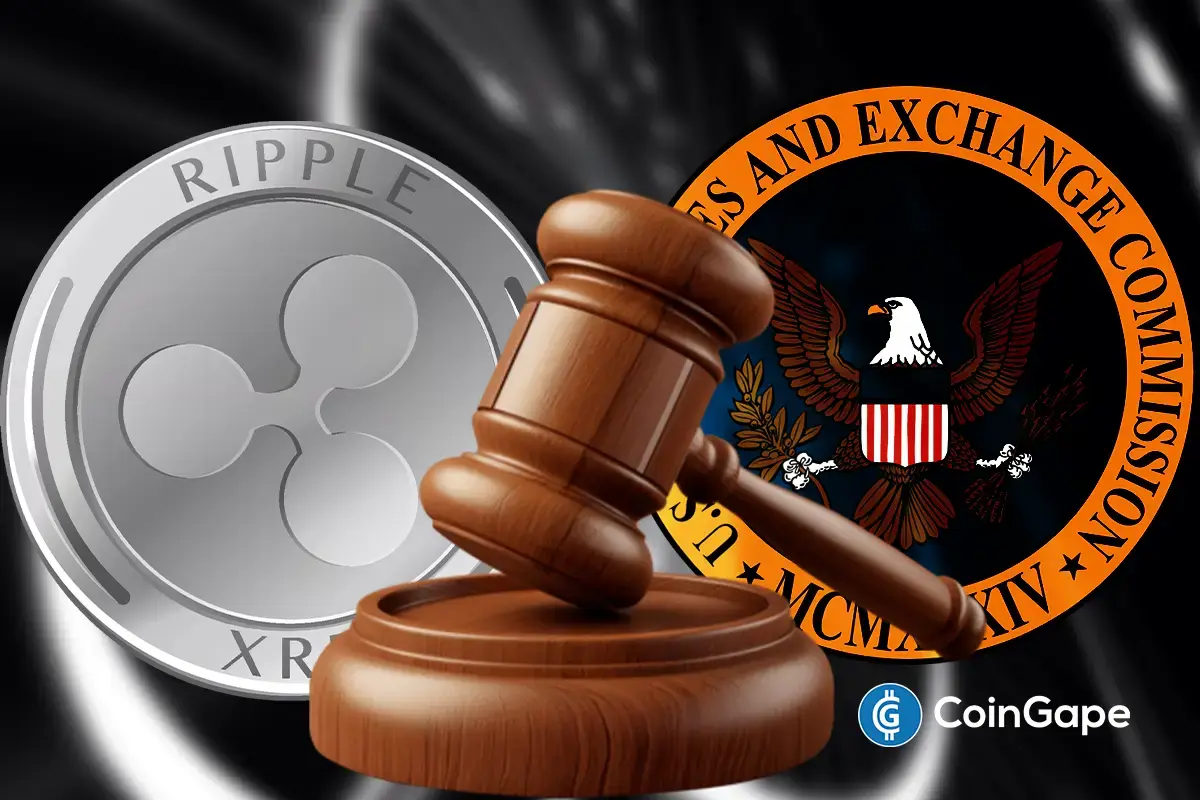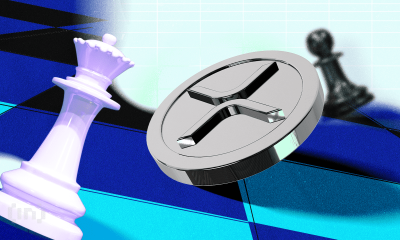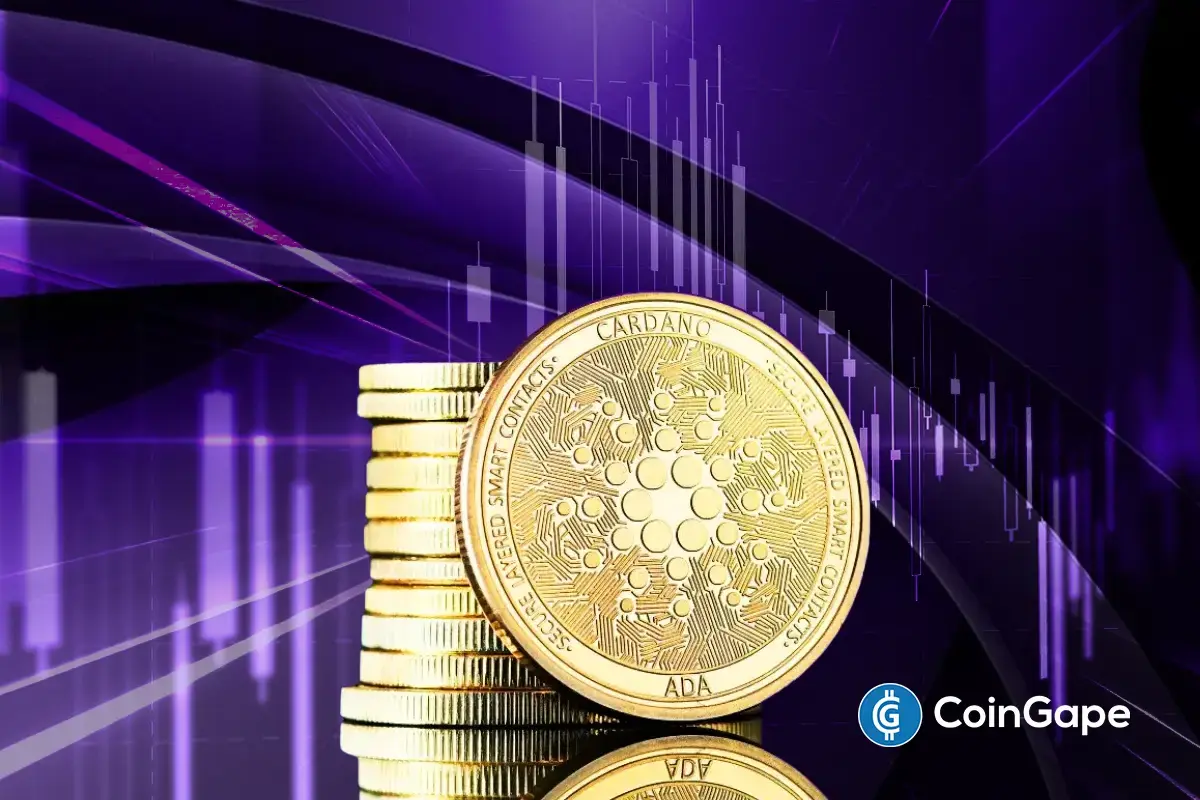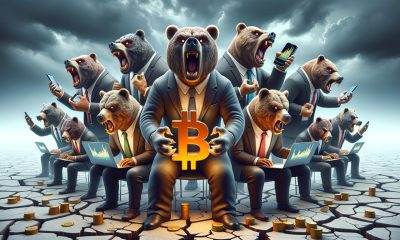Market
SEC Unlikely to Approve in 2024

According to recent revelations, the odds of the US SEC (Securities and Exchange Commission) approving a Solana ETF (exchange-traded fund) anytime soon have diminished significantly.
Fox Business correspondent Eleanor Terrett reported that the SEC has already notified at least two of the five firms filing for Solana spot ETFs that their applications would be rejected.
Solana ETF Approval Chances are Extremely Low
According to Terrett, the SEC has notified at least two of the five prospective issuers that it will reject their 19b-4 filings for the SOL spot ETFs.
“The consensus here, I’m told, is that the SEC won’t entertain any new crypto ETFs under the current administration,” Terrett wrote.
This development comes as a sharp reversal from earlier optimism. Just days ago, reports suggested that negotiations for Solana ETFs were progressing well and that approval could be within reach.
However, the SEC’s latest signals suggest that the regulatory agency remains hesitant to expand crypto-related ETFs beyond Bitcoin and Ethereum, the only digital asset ETFs currently approved in the US.
Solana is among several altcoins whose ETF applications remain in limbo. Alongside Solana, applications for XRP, HBAR, and Litecoin ETFs are also under review.
Filing a 19b-4 form, which sets the timeline for the SEC’s review process, is a crucial step in this journey. However, Bloomberg Intelligence’s James Seyffart pointed out that several applicants have not reached this stage, as indicated by deadlines marked “N/A.”
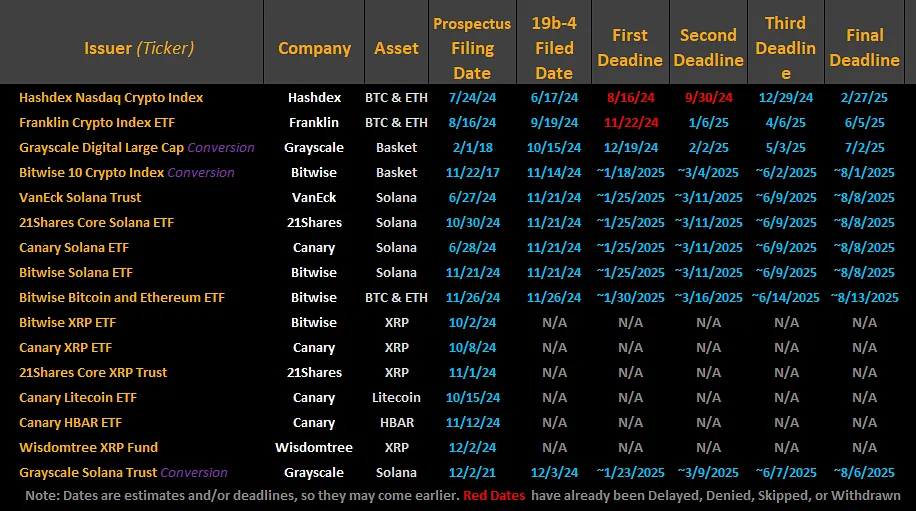
Bitwise, Canary Capital, and Grayscale recently made headlines with their Solana ETF filings. Meanwhile, VanEck and 21Shares collaborated on a submission to Cboe, signaling widespread institutional interest in the Solana ecosystem.
Despite this momentum, a lack of regulatory clarity continues to weigh on the market, with Solana ETF approval odds reportedly plummeting to just 3% three months ago.
Many view a SOL-based ETF as a natural next step in Solana’s maturation, enabling broader investor access and liquidity. The SEC’s stringent stance, however, reflects the challenges of achieving this milestone under the current regulatory framework. With numerous applications already rejected or pending without clear timelines, the Solana ETF debate exemplifies the broader struggle between innovation and oversight in the crypto industry.
Political and Regulatory Shifts Could Change Things
The SEC’s resistance to broadening crypto ETF approvals reflects the current administration’s cautious approach to digital assets, spearheaded by Chair Gary Gensler. However, political and leadership changes could shift this dynamic.
President-elect Donald Trump has expressed a pro-crypto stance that some experts believe could pave the way for more accommodating policies. Analysts suggest a Trump administration might foster a more favorable regulatory environment for digital assets, especially with a crypto-friendly SEC chair like Paul Atkins.
This change could reignite optimism for Solana and other altcoin ETFs that are currently stalled.
“The greatest Solana win coming from the new Trump Presidency will be our long-awaited ETF in 2025 or 2026. No surprise, the incredible VanEck team will lead the charge here with support from 21Shares and Canary Capital,” said Dan Jablonski, head of growth at news and research firm Syndica.
Despite regulatory hurdles, Solana continues to demonstrate strong ecosystem growth. As of this writing, SOL is trading for $239.47, a modest 1.37% gain on the day. The blockchain is celebrated for its high throughput and low transaction costs, which have attracted institutional interest.

Following the appointment of a new SEC chair ahead of Gensler’s resignation and as Trump’s inauguration nears, the potential for significant regulatory shifts looms large. These developments could usher in a new era of crypto acceptance, opening doors for Solana and other altcoin ETFs. Until then, however, the path to approval remains fraught with uncertainty.
Disclaimer
In adherence to the Trust Project guidelines, BeInCrypto is committed to unbiased, transparent reporting. This news article aims to provide accurate, timely information. However, readers are advised to verify facts independently and consult with a professional before making any decisions based on this content. Please note that our Terms and Conditions, Privacy Policy, and Disclaimers have been updated.
Market
Trump Family Gets Most WLFI Revenue, Causing Corruption Fears
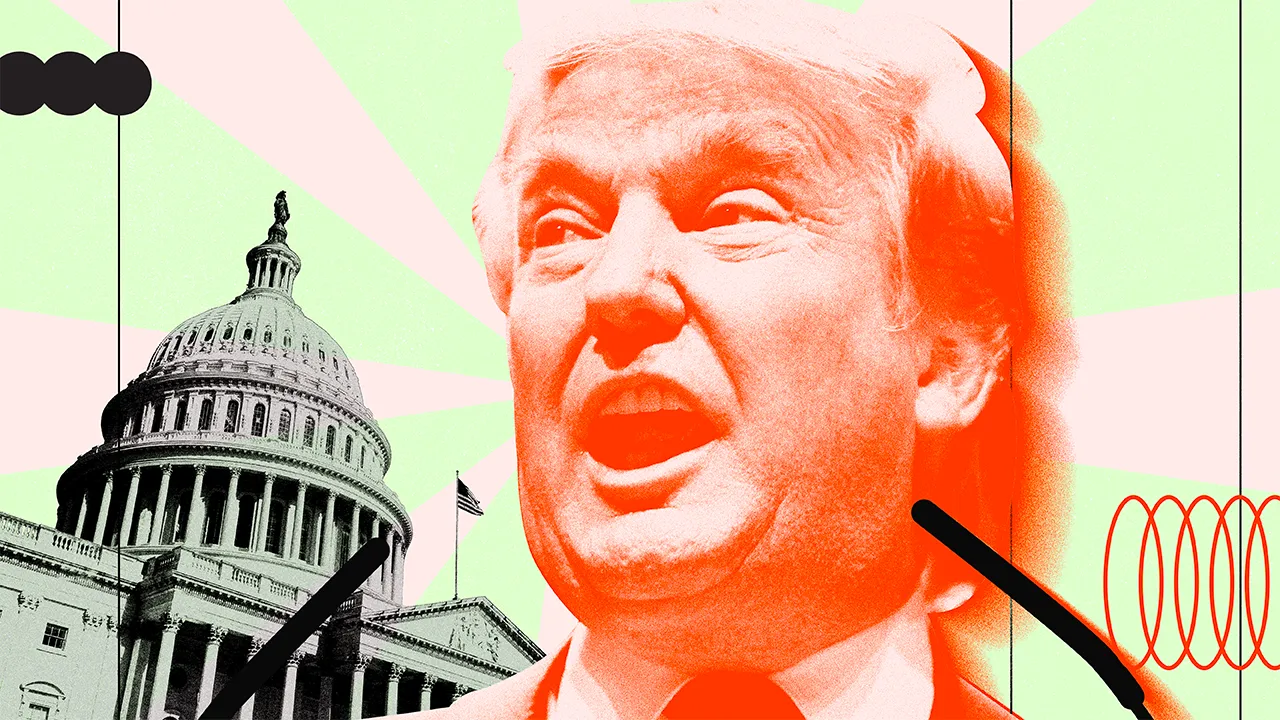
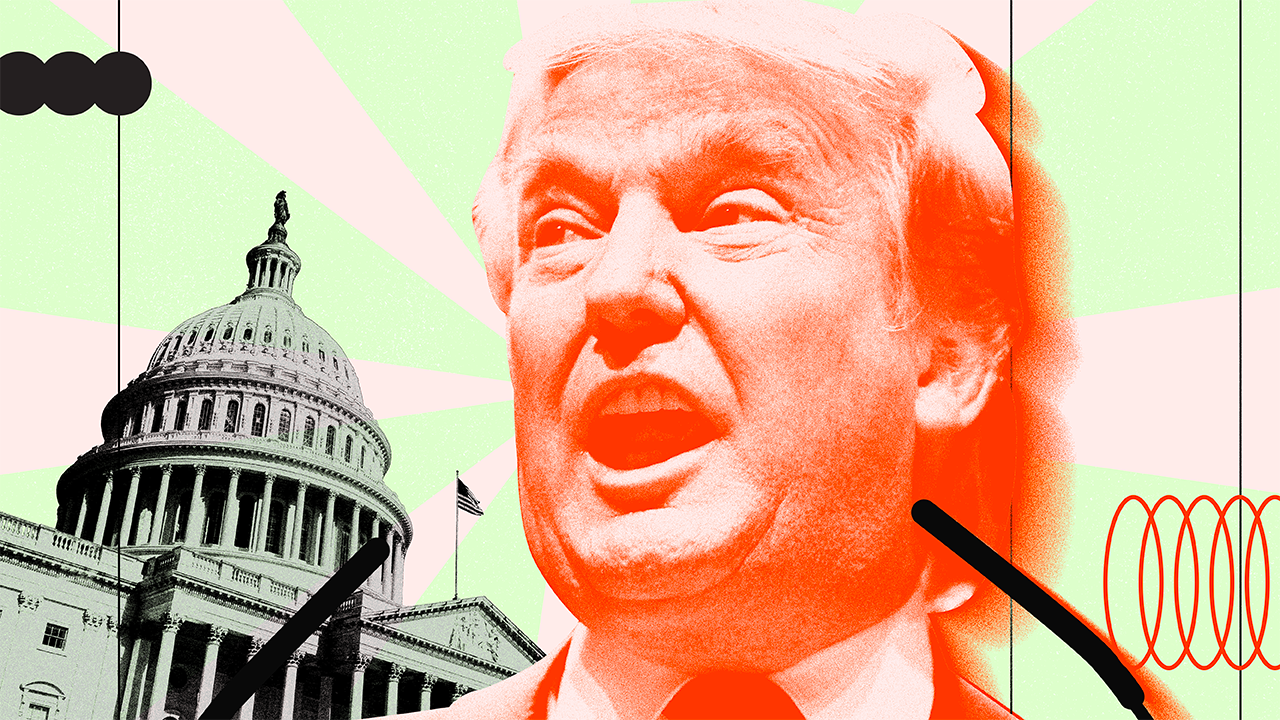
A new report claims that President Trump and his immediate family receive most of WLFI’s revenues. The Trumps are entitled to 75% of token sale revenues, about $400 million, and 60% of other incomes.
If these numbers are even partially accurate, they raise significant concerns about potential conflicts of interest. They also raise questions about the broader implications for transparency and accountability regarding Trump’s crypto policies.
Does the Trump Family Receive WLFI Proceeds?
World Liberty Financial (WLFI), a project affiliated with President Trump, has made a lot of waves in the crypto space since the end of last year. After persistent rumors of a Binance partnership, WLFI officially launched a new stablecoin, USD1. There is no clear evidence of Binance’s involvement in this launch. However, a new report from Reuters has disclosed some disturbing details.
Essentially, it claims that it has found evidence of how much of WLFI’s revenues go directly to Trump’s family. Trump will get 75% of revenues from token sales and 60% from subsequent operations. WLFI completed its major token sale, which would, therefore, entitle the Trumps to about $400 million.
Reuters calculates that 5% of proceeds from this token sale would actually fund WLFI’s platform, with the rest going to other co-founders. Further, its buyers are not able to actually resell their tokens, and it’s unclear what governance actions they could influence. There’s not an apparent reason for the average retail trader to actually buy these assets.
If these numbers are true, they could represent a serious conflict of interest and a dire threat to the US economy. First, community leaders like Vitalik Buterin warned of corruption from political meme coins like TRUMP. If Trump gets a cut of WLFI’s token sales, that’s already a huge avenue for misuse.
Additionally, since Trump is making huge changes to US financial regulators, there may not be anyone to investigate WLFI corruption allegations. For example, TRON founder Justin Sun invested $30 million into WLFI, and the SEC settled a fraud case against him months later. The SEC has been settling all its crypto enforcement actions, but this investment still looks relevant.
“You’ve got the guy in charge who is responsible for his own regulation. WLFI tokens would be the perfect vehicle for governments or oligarchs overseas to funnel money to the president,” former regulator Ross Delston claimed.
The biggest danger might not even come from political corruption or fears of centralization in crypto. Trump recently outlined a plan to use stablecoins to promote dollar dominance, and WLFI now has its own stablecoin. It also has around $111 million in unrealized losses due to its crypto investments and claims it will use “other cash equivalents” in USD1’s reserves.
It’s hard to overstate the potential risks involved. Given Trump’s financial stake in WLFI, there’s a clear incentive to promote the firm’s stablecoin as part of his “dollar dominance” agenda. If this leads to widespread investment in USD1 and the peg doesn’t hold, the consequences could ripple across the entire crypto market.
Simply put, this sort of business arrangement is totally unprecedented for a sitting US President. A few Senators are already investigating Trump’s connections with WLFI. However, their lack of political power and defanged federal regulators may hamper their ability to change anything.
Disclaimer
In adherence to the Trust Project guidelines, BeInCrypto is committed to unbiased, transparent reporting. This news article aims to provide accurate, timely information. However, readers are advised to verify facts independently and consult with a professional before making any decisions based on this content. Please note that our Terms and Conditions, Privacy Policy, and Disclaimers have been updated.
Market
BNB Breaks Below $605 As Bullish Momentum Fades – What’s Next?
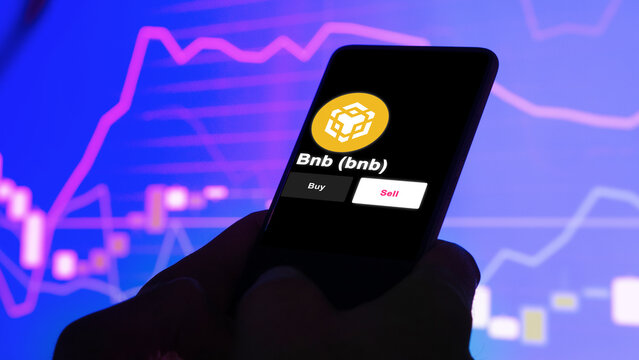
The crypto market just got a shock as BNB plunged below the crucial $605 support level, sending ripples of concern across trading circles. This sudden breakdown comes after weeks of bullish dominance, leaving investors scrambling to answer one critical question: Is this a temporary dip or the start of a major trend reversal?
With weakening momentum and key technical indicators flashing red, BNB charts are telling a worrisome story. The once-steady uptrend now faces its toughest test as the token struggles to maintain its footing in a suddenly bearish market.
Bearish Pressure Builds: Are BNB Sellers Gaining Control?
BNB’s price is facing growing bearish pressure after slipping below the crucial $605 level, signaling a potential shift in market momentum. The failed attempt to hold this key support has allowed sellers to take control, pushing BNB lower and raising concerns about a prolonged decline.
Technical indicators further confirm the increasing strength of sellers. The MACD has turned negative, indicating a loss of upward momentum, while the RSI is trending downward, suggesting that buying pressure is weakening. Additionally, trading volume remains low on attempted rebounds, highlighting a lack of conviction from bulls.
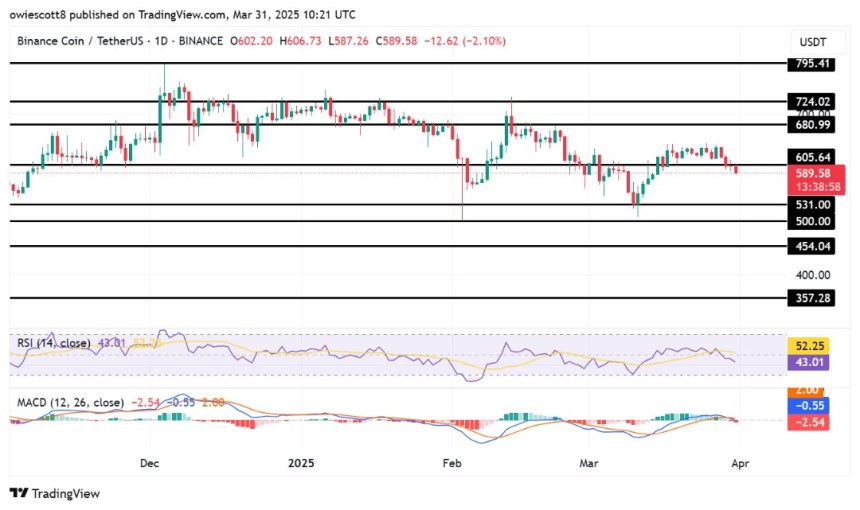
If sellers maintain their grip, BNB could extend its decline toward the next major support zone around $531, which previously served as a short-term bounce level during past corrections. A break below this zone would solidify bearish dominance and cause a deeper decline to $500.
Below $500, the next key level to watch is $454, representing a technical support area. Pushing below this level may trigger an extended sell-off, driving BNB toward other key support levels where traders may look for signs of reversal.
What Needs To Happen For A Rebound
For BNB to stage a meaningful recovery after breaking below $605, the bulls must reclaim key levels and generate strong buying momentum. Its first crucial step is stabilizing above $530, a short-term support zone that could provide the foundation for a reversal. Holding this level would signal that buyers are stepping in, preventing more declines.
A sustained move back above $605 would be the next major confirmation of a recovery. Reclaiming this level as support might shift market sentiment in favor of the bulls and trigger renewed buying interest. Additionally, the Relative Strength Index (RSI) needs to rebound from oversold conditions, while the MACD crossover into bullish territory would reinforce an upside move.
For a stronger bullish outlook, BNB would need to push past $680, a level that previously acted as resistance. Breaking above this zone with increasing volume could confirm a trend reversal toward $724 and $795, marking a full recovery from recent losses.
Market
Pi Network Struggles, On Track for New All-Time Low
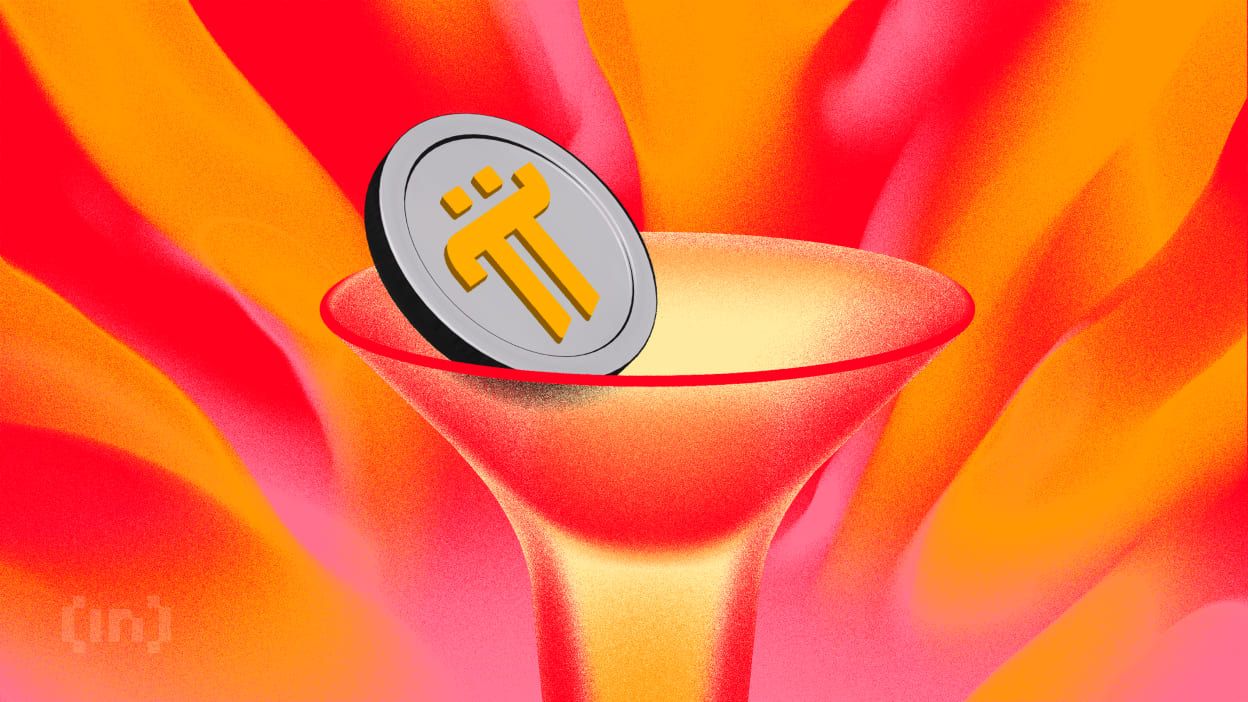
Pi Network continues to struggle in the market as its price remains on a downward trajectory. Despite earlier optimism, investors have been increasingly skeptical of the coin, contributing to a prolonged downtrend.
The uncertainty around its value suggests Pi Network may be headed for a new all-time low (ATL).
Pi Network Witnesses Outflows
The ADX (Average Directional Index) has recently crossed the 25.0 threshold, indicating that the current bearish trend is gaining momentum. This is a concerning signal for Pi Network’s price, as the rising bearishness suggests that it will be increasingly difficult for the cryptocurrency to recover in the short term. With the ADX pointing towards sustained negative market forces, the pressure on Pi Network’s price will likely intensify as the token nears its previous ATL.
The growing strength of the bearish trend is compounded by investor uncertainty, with many questioning the token’s long-term viability. This uncertainty can lead to further selling and a lack of fresh buying support, making it even harder for Pi Network to find a solid foundation for recovery.
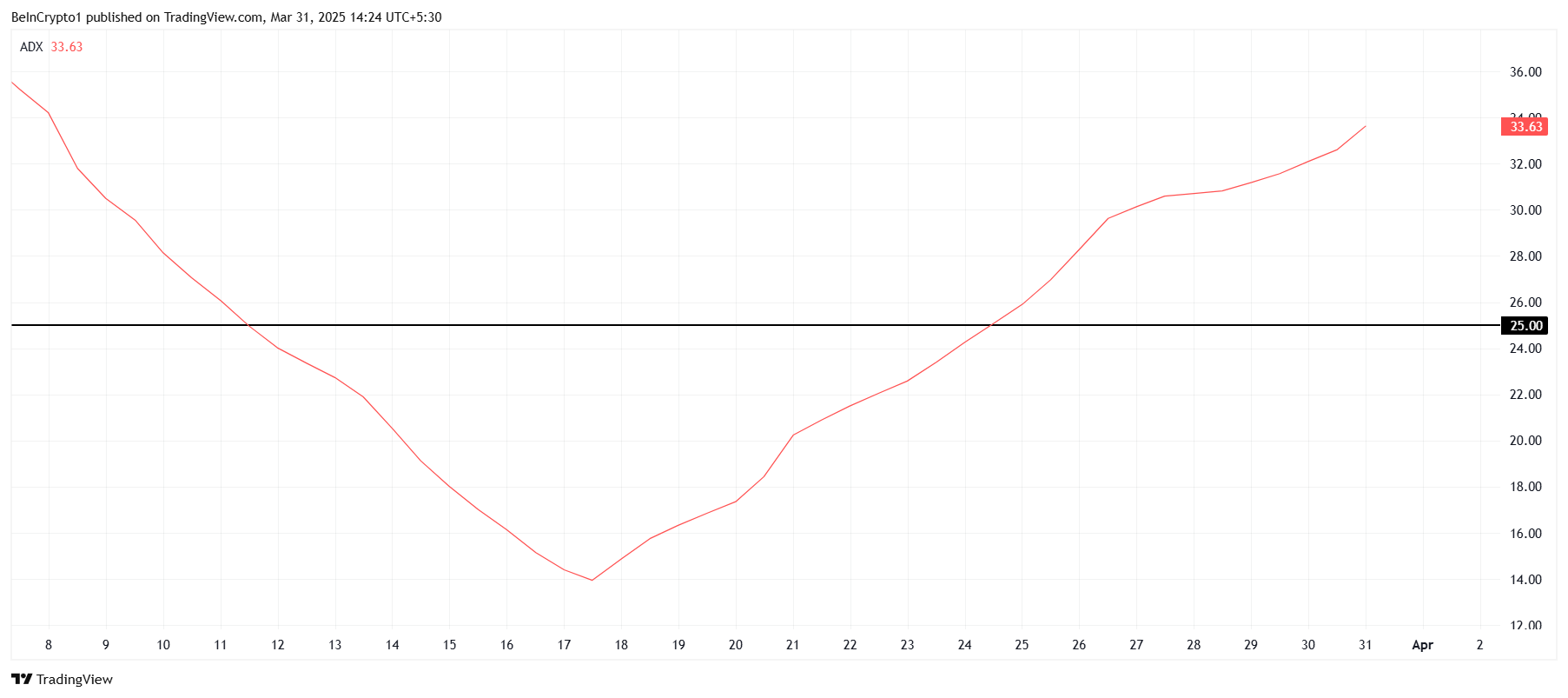
Pi Network’s macro momentum also paints a grim picture for the altcoin. The Chaikin Money Flow (CMF) indicator, which measures the volume of money flowing into and out of a coin, has been deeply negative. Although there has been a slight uptick, the indicator remains in the negative zone, signaling that investors are still reluctant to buy into the token.
The slight increase in CMF reflects minor capital inflows, but this could be short-lived if the skepticism persists. With investors hesitating and outflows continuing, Pi Network’s price faces significant challenges. The current trend suggests that more outflows could occur if the coin reaches a new ATL.
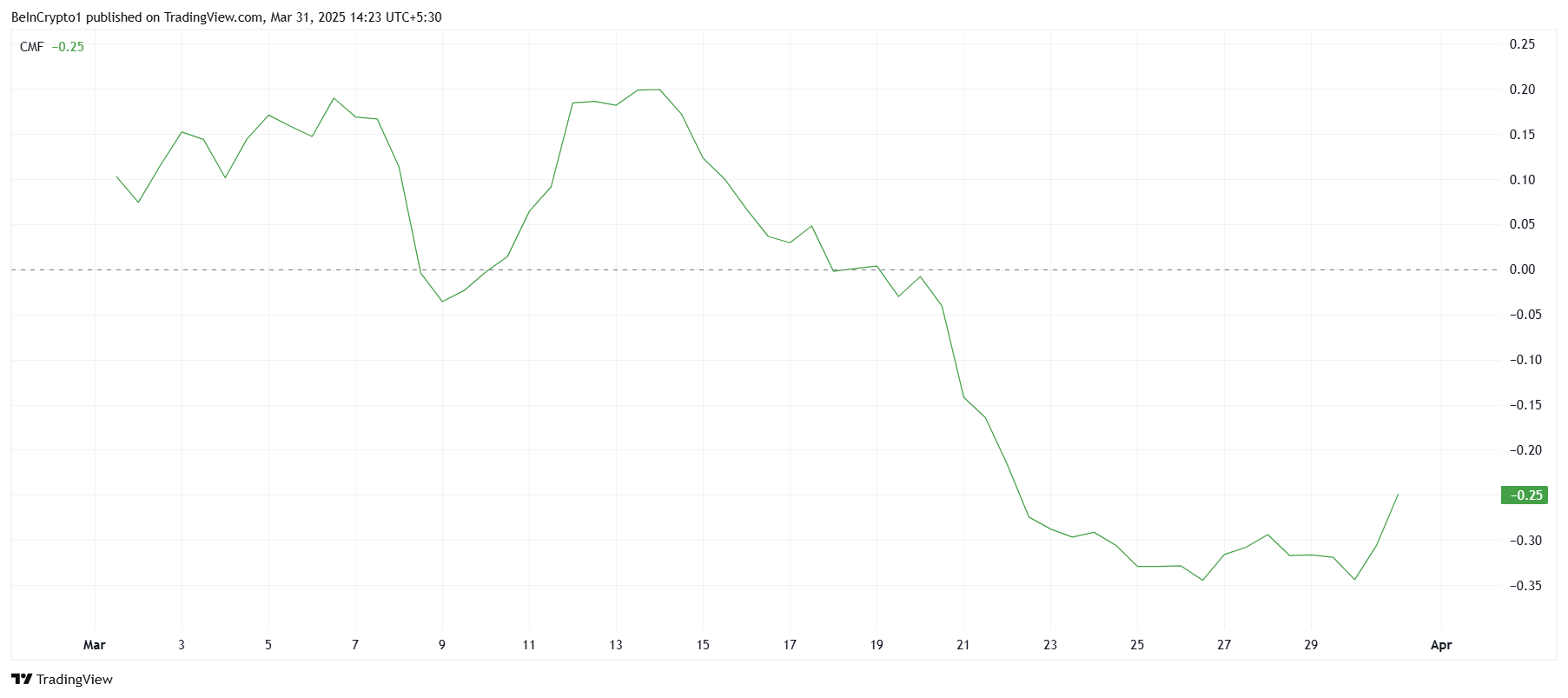
PI Price Nears New Low
Pi Network is currently trading at $0.70, just above its ATL of $0.62. The altcoin saw a 12.8% decline over the past 24 hours after failing to reclaim $0.87 as support. This failure to regain previous support levels shows the continued lack of investor confidence.
If the bearish trend persists, Pi Network is likely to fall through the $0.62 support level, potentially dropping to $0.50. A new ATL could be set as the market sentiment continues to weigh heavily on the price, leading to further losses for existing investors.
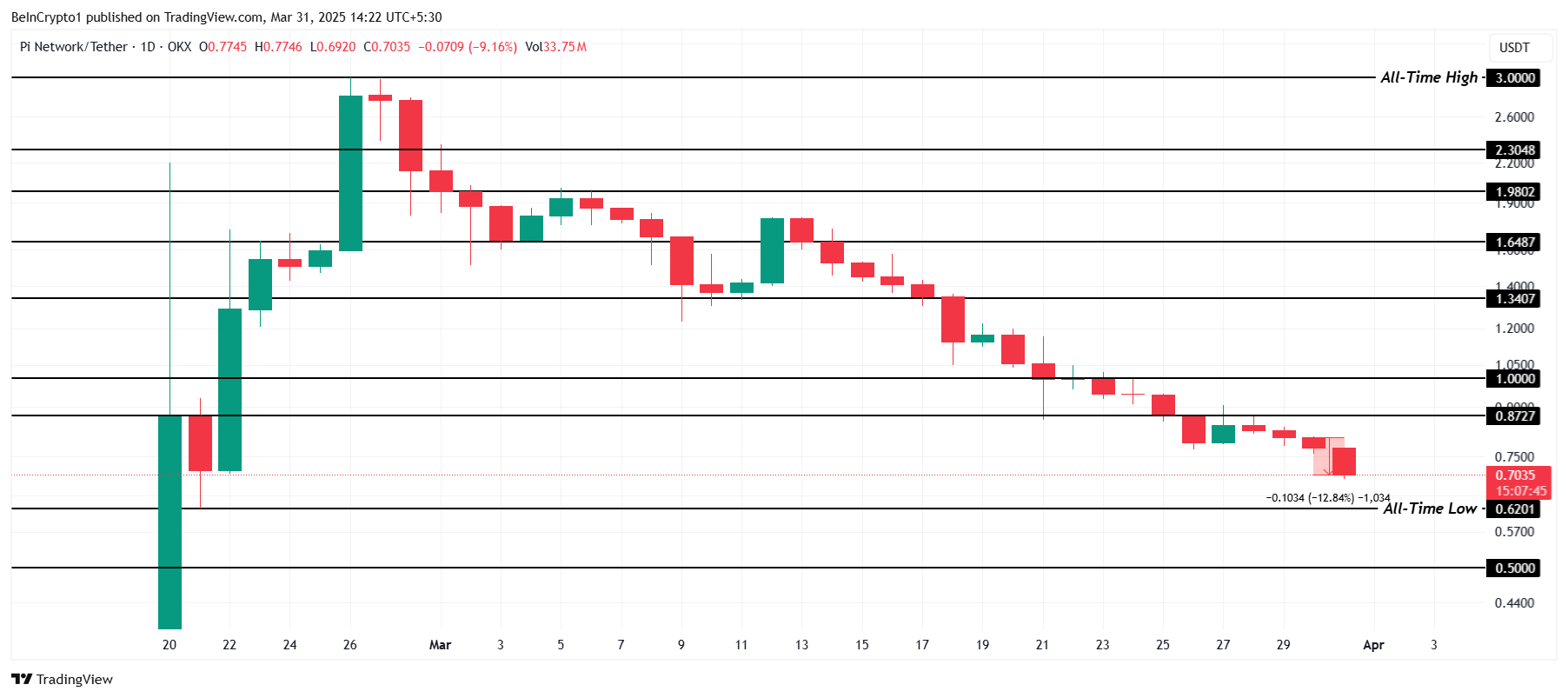
The only way to reverse the bearish outlook is for investors to change their approach and capitalize on low prices. Increased inflows could potentially drive Pi Network’s price back above $0.87, and if it surpasses the $1.00 level, it would reclaim critical support and signal a possible recovery for the altcoin.
Disclaimer
In line with the Trust Project guidelines, this price analysis article is for informational purposes only and should not be considered financial or investment advice. BeInCrypto is committed to accurate, unbiased reporting, but market conditions are subject to change without notice. Always conduct your own research and consult with a professional before making any financial decisions. Please note that our Terms and Conditions, Privacy Policy, and Disclaimers have been updated.


